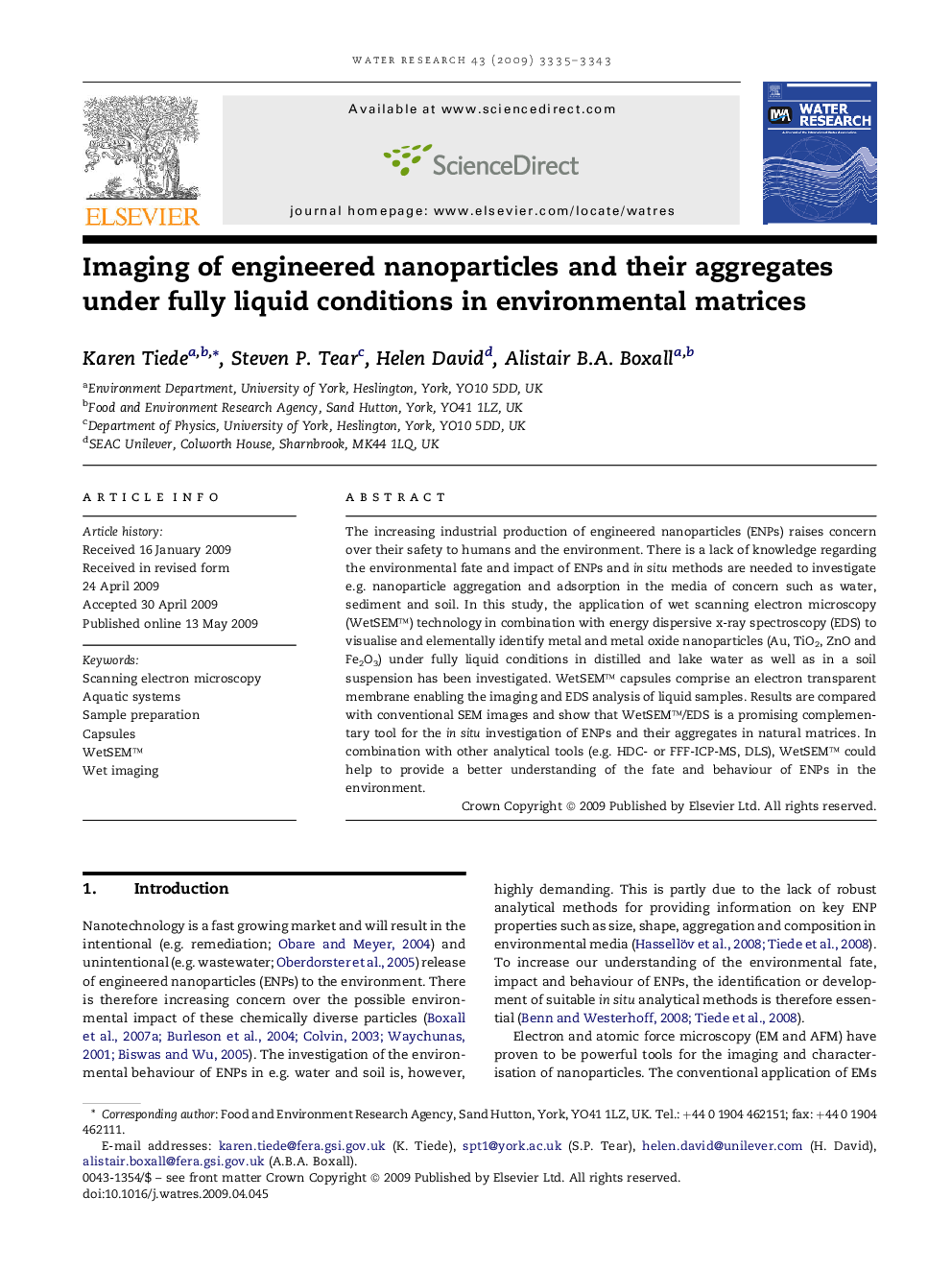| Article ID | Journal | Published Year | Pages | File Type |
|---|---|---|---|---|
| 4484263 | Water Research | 2009 | 9 Pages |
The increasing industrial production of engineered nanoparticles (ENPs) raises concern over their safety to humans and the environment. There is a lack of knowledge regarding the environmental fate and impact of ENPs and in situ methods are needed to investigate e.g. nanoparticle aggregation and adsorption in the media of concern such as water, sediment and soil. In this study, the application of wet scanning electron microscopy (WetSEM™) technology in combination with energy dispersive x-ray spectroscopy (EDS) to visualise and elementally identify metal and metal oxide nanoparticles (Au, TiO2, ZnO and Fe2O3) under fully liquid conditions in distilled and lake water as well as in a soil suspension has been investigated. WetSEM™ capsules comprise an electron transparent membrane enabling the imaging and EDS analysis of liquid samples. Results are compared with conventional SEM images and show that WetSEM™/EDS is a promising complementary tool for the in situ investigation of ENPs and their aggregates in natural matrices. In combination with other analytical tools (e.g. HDC- or FFF-ICP-MS, DLS), WetSEM™ could help to provide a better understanding of the fate and behaviour of ENPs in the environment.
